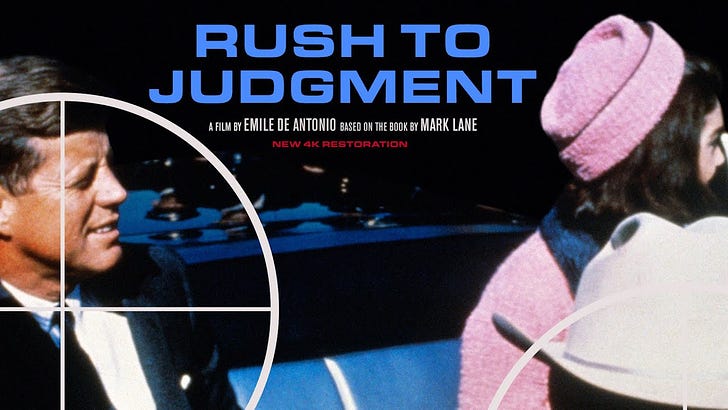‘Rush to Judgment’ Ready to Provoke Once Again
The seminal JFK assassination documentary is re-released in conjunction with 60th anniversary of president’s death
Keep reading with a 7-day free trial
Subscribe to JFK Facts to keep reading this post and get 7 days of free access to the full post archives.



